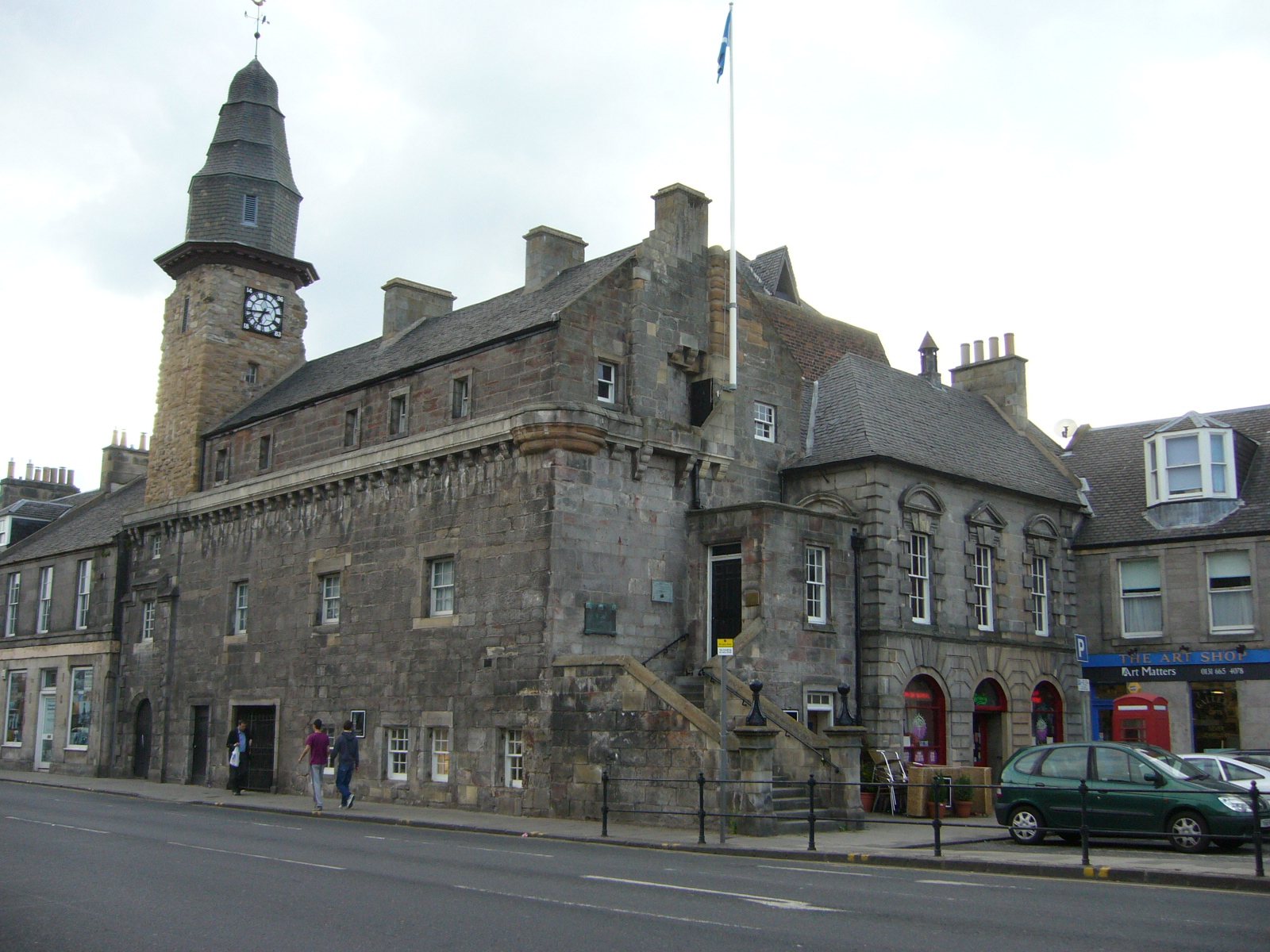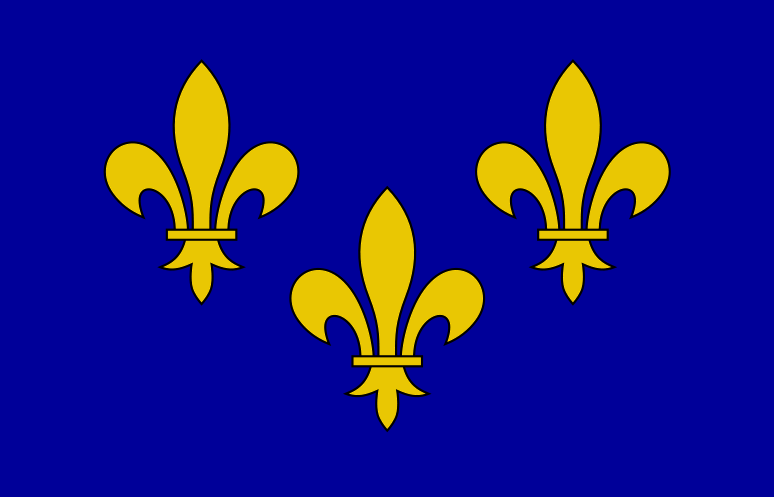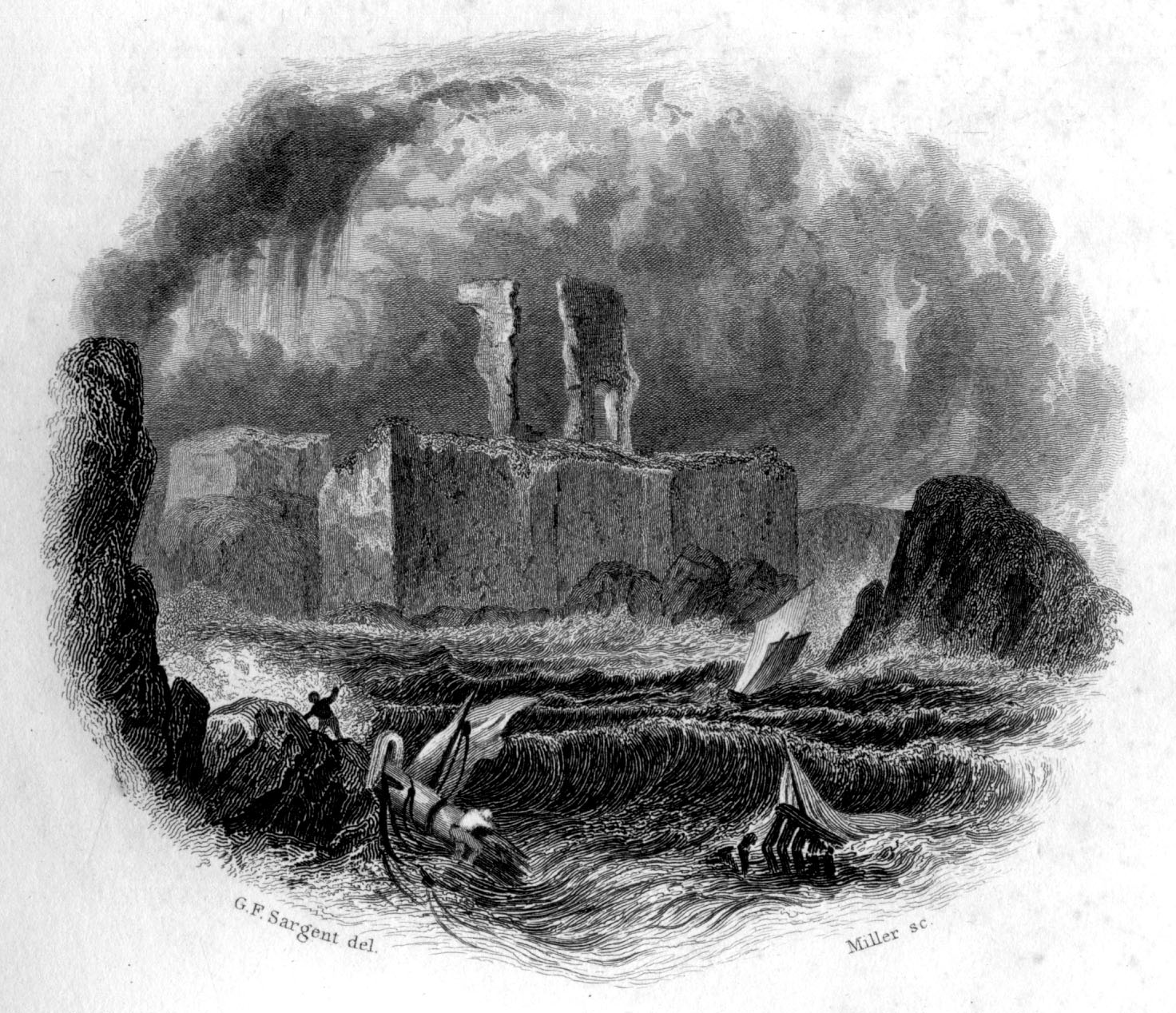|
Paul De Thermes
Paul de La Barthe de Thermes or de Termes (1482–1562), also Paul de Terme or Maréchal de Thermes, was a French Army Marshal ("Maréchal"). Reign of Henri II Rough Wooing In June 1549, de Thermes was sent to Scotland to help in the war against England now called the Rough Wooing. He was instructed to continue the fortification of border strongholds, and came with massive reinforcements, munitions and money. De Thermes began the construction of an artillery fort at Luffness Castle, Luffness near Aberlady to prevent English supplies reaching Haddington, East Lothian, Haddington. The Scottish leader Regent Arran came to stay at Carberry Tower and Seton Palace to see the works commence. De Thermes was helped at the site by a Scottish pursuivant Alexander Ross. Gilbert Kennedy, 3rd Earl of Cassilis was lieutenant of the Scottish force there. There was a scare that English soldiers would over-run the building site on 23 June. Men were summoned from as far away as Perth, Scotland, Per ... [...More Info...] [...Related Items...] OR: [Wikipedia] [Google] [Baidu] |
National Records Of Scotland
National Records of Scotland ( gd, Clàran Nàiseanta na h-Alba) is a non-ministerial department of the Scottish Government. It is responsible for Civil registry, civil registration, the census in Scotland, demography and statistics, family history, as well as the national archives and historical records. National Records of Scotland was formed from the merger of the General Register Office for Scotland and the National Archives of Scotland in 2011; it combines all the functions of the two former organisations. The offices of Registrar General for Scotland and Keeper of the Records of Scotland remain separate, but since 2011 both have been vested ''Ex officio member, ex officio'' in the Chief Executive of National Records of Scotland, currently Paul Lowe. Location National Records of Scotland is based in HM General Register House on Princes Street in the New Town, Edinburgh, New Town in Edinburgh. The building was designed by Robert Adam for the Register House Trustees; it was o ... [...More Info...] [...Related Items...] OR: [Wikipedia] [Google] [Baidu] |
Musselburgh
Musselburgh (; sco, Musselburrae; gd, Baile nam Feusgan) is the largest settlement in East Lothian, Scotland, on the coast of the Firth of Forth, east of Edinburgh city centre. It has a population of . History The name Musselburgh is Old English in origin, with ''mussel'' referring to the shellfish.Musselburgh was famous for the mussel beds which grew in the Firth of Forth; after many years of claims that the mussels were unsafe for consumption, a movement has been started to reestablish the mussel beds as a commercial venture. The ''burgh'' element appears to derive from burh, in the same way as Edinburgh, before the introduction of formal burghs by David I. Its earliest Anglic name was ''Eskmuthe'' (Eskmouth) for its location at the mouth of the River Esk. Musselburgh was first settled by the Romans in the years following their invasion of Scotland in AD 80. They built a fort a little inland from the mouth of the River Esk, at Inveresk. They bridged the Esk downstre ... [...More Info...] [...Related Items...] OR: [Wikipedia] [Google] [Baidu] |
Luffness
Luffness is a hamlet in East Lothian, Scotland. It lies between the towns of Gullane and Aberlady and is approximately 20 miles east of Edinburgh. History Most of the houses in Luffness are traditional farm cottages; among its notable buildings are Luffness Castle (also known as Luffness House) and Luffness Mill. Luffness New golf course is part of the fine selection of courses in the area, and the Myreton Motor Museum is nearby. Gallery Image:Luffness Mill House3.jpg, Entrance to Luffness Mill House Image:Luffness Mains Farm.jpg, Luffness Mains Farm Image:Luffness01.jpg, Old home in Luffness Image:Luffness Mill House2.jpg, Luffness Mill House Image:NewLuffnessGolf-October-1894.JPG, Old Tom Morris (''seated far left'') on 11 October 1894 at the New Luffness Competition. See also *List of places in East Lothian ''Map of places in East Lothian compiled from this list'' The List of places in East Lothian is a list for any town, village, hamlet, castle, golf course, historic hou ... [...More Info...] [...Related Items...] OR: [Wikipedia] [Google] [Baidu] |
Siege Of Haddington
The sieges of Haddington were a series of sieges staged at the Royal Burgh of Haddington, East Lothian, Scotland, as part of the War of the Rough Wooing, one of the last Anglo-Scottish Wars. Following Regent Arran's defeat at the battle of Pinkie Cleugh on Saturday 10 September 1547, he took Haddington, with 5000 troops including French mercenaries and troops sent by Henry II of France to bolster the Auld Alliance. Afterwards, Francis Talbot, 5th Earl of Shrewsbury took it with nearly 15,000. The English forces built artillery fortifications and were able to withstand an assault by the besieging French and Scots troops supported by heavy cannon in July 1548. Although the siege was scaled down after this unsuccessful attempt, the English garrison abandoned the town on 19 September 1549, after attrition by Scottish raids at night, sickness, and changing political circumstance. The English dig in The English commander, Grey of Wilton, captured and garrisoned Haddington and outly ... [...More Info...] [...Related Items...] OR: [Wikipedia] [Google] [Baidu] |
Ormiston
Ormiston is a village in East Lothian, Scotland, near Tranent, Humbie, Pencaitland and Cranston, located on the north bank of the River Tyne at an elevation of about . The village was the first planned village in Scotland, founded in 1735 by John Cockburn (1685–1758), one of the initiators of the Agricultural Revolution. Name The word Ormiston is derived from a half mythical Anglian settler called ''Ormr'', meaning 'serpent' or 'snake'. 'Ormres' family had possession of the land during the 12th and 13th centuries. Ormiston or 'Ormistoun' is not an uncommon surname, and ''Ormr'' also survives in some English placenames such as Ormskirk and Ormesby. The latter part of the name, formerly spelt 'toun', is likely to descend from its Northumbrian Old English and later Scots meaning as 'farmstead' or 'farm and outbuildings' rather than the meaning 'town'. There was an "Ormiston" in Berwickshire, near Linton, where the legend of the Worm of Linton was related to land owne ... [...More Info...] [...Related Items...] OR: [Wikipedia] [Google] [Baidu] |
Auldhame & Scoughall
Auldhame and Scoughall are hamlets in East Lothian, Scotland. They are close to the town of North Berwick and the village of Whitekirk, and are approximately east of Edinburgh. Saint Baldred's legacy It is said that the 8th-century Christian missionary Saint Baldred had one of his bases at Auldhame, and through his influence the parish of Auldhame had significant influence in the development of Christianity in Scotland. His name also lives on in St Baldred's Church and St Baldred's Road in North Berwick. Following his death there was a dispute between the parishes of Auldhame, Tyninghame, and Prestonkirk, as to which should have his body. The story goes that by the advice of a Holy Man, they spent the night in prayer. In the morning three bodies were found, in all respects alike, each in its winding sheet, prepared for burial. To this day all three churches maintain Saint Baldred was buried within their walls. In 2005 skeletal and archaeological remains, thought to be a c ... [...More Info...] [...Related Items...] OR: [Wikipedia] [Google] [Baidu] |
Dunbar Castle
Dunbar Castle was one of the strongest fortresses in Scotland, situated in a prominent position overlooking the harbour of the town of Dunbar, in East Lothian. Several fortifications were built successively on the site, near the English-Scottish border. The last was slighted in 1567; it is a ruin today. Structure The body of buildings measured in excess of one hundred and sixty five feet from east to west, and in some places up to two hundred and ten feet from north to south. The South Battery, which Grose supposes to have been the citadel or keep, is situated on a detached perpendicular rock, only accessible on one side, seventy two feet high, and is connected to the main part of the castle by a passage of masonry measuring sixty nine feet. The interior of the citadel measures fifty four feet by sixty within the walls. Its shape is octagonal. Five of the gun-ports remain, which are called the 'arrow-holes'. They measure four feet at the mouth and only sixteen inches at the o ... [...More Info...] [...Related Items...] OR: [Wikipedia] [Google] [Baidu] |
Longniddry
Longniddry ( sco, Langniddry, gd, Nuadh-Treabh Fada) is a coastal village in , Scotland, with an estimated population of in . The Scottish Women's Rural Institute was founded here in 1917. Features Longniddry is primarily a dormitory village for commuters, with good transport links by road and rail ( |
Stirling Castle
Stirling Castle, located in Stirling, is one of the largest and most important castles in Scotland, both historically and architecturally. The castle sits atop Castle Hill, an intrusive crag, which forms part of the Stirling Sill geological formation. It is surrounded on three sides by steep cliffs, giving it a strong defensive position. Its strategic location, guarding what was, until the 1890s, the farthest downstream crossing of the River Forth, has made it an important fortification in the region from the earliest times. Most of the principal buildings of the castle date from the fifteenth and sixteenth centuries. A few structures remain from the fourteenth century, while the outer defences fronting the town date from the early eighteenth century. Before the union with England, Stirling Castle was also one of the most used of the many Scottish royal residences, very much a palace as well as a fortress. Several Scottish Kings and Queens have been crowned at Stirling, in ... [...More Info...] [...Related Items...] OR: [Wikipedia] [Google] [Baidu] |
Peebles
Peebles ( gd, Na Pùballan) is a town in the Scottish Borders, Scotland. It was historically a royal burgh and the county town of Peeblesshire. According to the 2011 census, the population was 8,376 and the estimated population in June 2018 was 9,000. History Initially, a market town, Peebles played a role in the woollen industry of the Borders during the 19th and early-20th centuries. Most mills closed by the 1960s, although the last one remained open until 2015. The character of Peebles has changed; the town serves as home to many people who commute to work in Edinburgh, as well as being a popular tourist destination, especially in the summer. In the mid-to-late 19th century health tourism flourished, centring on hydropathic establishments, which over time morphed into a hotel format, with Peebles Hydro Hotel being one of the few survivors of that era. Notable buildings in the town include the Old Parish Church of Peebles and Neidpath Castle. Other local attractions include ... [...More Info...] [...Related Items...] OR: [Wikipedia] [Google] [Baidu] |
Lord Protector Somerset
Edward Seymour, 1st Duke of Somerset (150022 January 1552) (also 1st Earl of Hertford, 1st Viscount Beauchamp), also known as Edward Semel, was the eldest surviving brother of Queen Jane Seymour (d. 1537), the third wife of King Henry VIII. He was Lord Protector of England from 1547 to 1549 during the minority of his nephew King Edward VI (1547–1553). Despite his popularity with the common people, his policies often angered the gentry and he was overthrown. Origins and early career Edward Seymour was born c. 1500, the son of Sir John Seymour (1474–1536), feudal baron of Hatch Beauchamp in Somerset, by his wife Margery Wentworth, eldest daughter of Sir Henry Wentworth of Nettlestead, Suffolk, and descended from Edward III. In 1514, aged about 14, he received an appointment in the household of Mary Tudor, Queen of France, and was ''enfant d’honneur'' at her marriage with Louis XII. Seymour served in the Duke of Suffolk's campaign in France in 1523, being kn ... [...More Info...] [...Related Items...] OR: [Wikipedia] [Google] [Baidu] |

.jpg)






